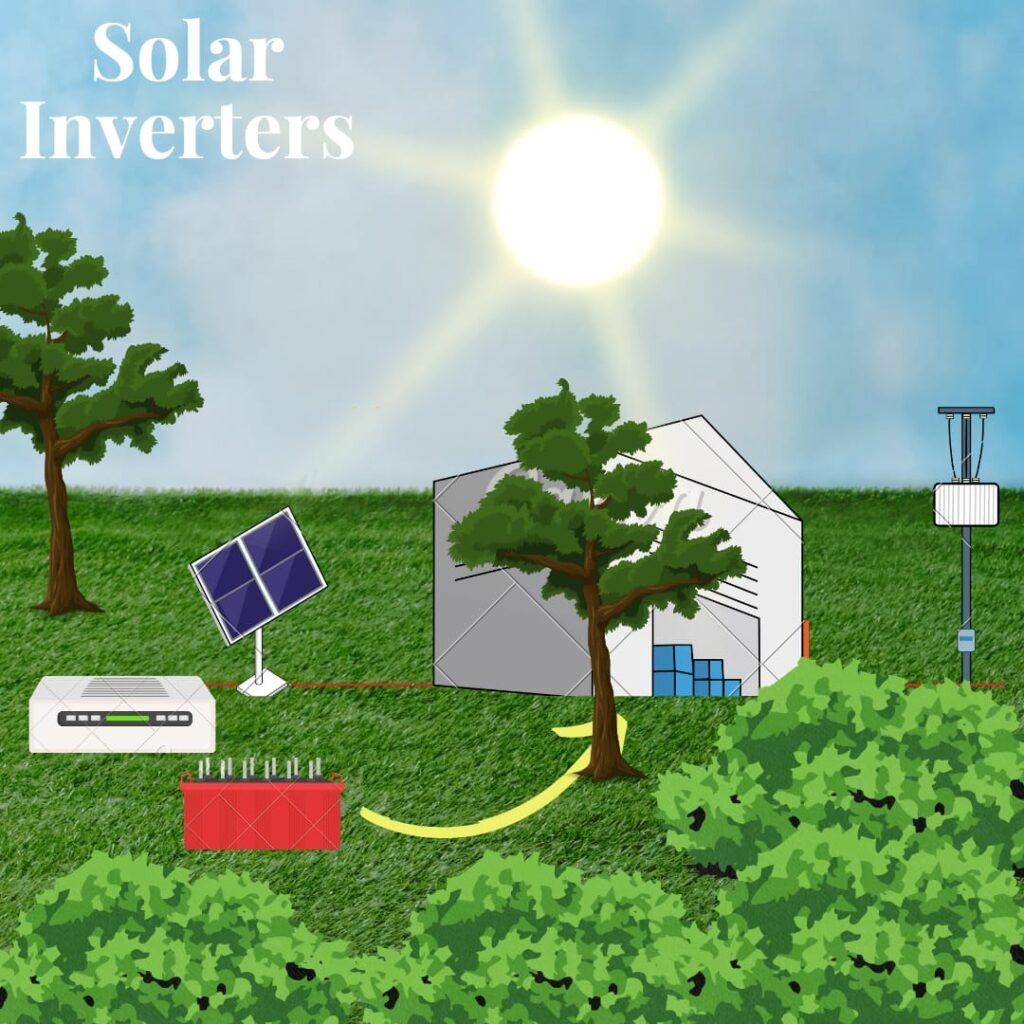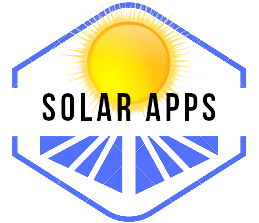Solar inverters in the quest for sustainable and renewable energy sources, solar power has emerged as a leading contender. Solar energy harnesses the power of the sun and converts it into usable electricity, making it an eco-friendly and economically viable alternative to traditional fossil fuels. At the heart of this solar energy revolution lies a critical component – the solar inverter. The primary role of inverters is to convert the DC power generated by PV panels into AC electricity, making it compatible with home appliances. Beyond this basic function, these converters play a crucial role in monitoring and evaluating the performance of the solar system. They assist in diagnosing and maintaining the system, addressing any issues that may arise.

Additionally, when there is excess solar power produced by the panels, these inverters efficiently manage the storage of solar charge in batteries. In essence, solar inverters significantly influence installers’ decision-making processes and directly impact the overall efficiency of their solar systems. In this article, we will delve into the world of solar inverters, exploring their functionality, importance, and impact on the renewable energy landscape.
Contents
Understanding
A solar inverters are an indispensable device that plays a key role in a solar power system. Solar panels, also known as photovoltaic (PV) modules, generate direct current (DC) electricity when exposed to sunlight. However, most household appliances and electrical devices require alternating current (AC) to function. This is where come into play – they are responsible for converting the DC electricity generated by solar panels into AC electricity, which can then be used to power homes, businesses, and industries.
How do I know if my solar inverter is working?
Check the Solar Inverters: The solar inverter is a crucial component of your solar power system. It converts the DC electricity generated by the solar panels into AC electricity that you can use in your home. Most inverters have a display that shows the current power output or production. If the display shows a value other than zero during daylight hours, it indicates that your solar panels are generating electricity.
Monitor Energy Production: Many solar power systems come with monitoring tools that allow you to track your system’s energy production over time. This could be a dedicated monitoring device, a mobile app, or a web portal provided by your solar installer. Check these platforms to see if your system is generating the expected amount of energy based on weather conditions and time of day.
Observe Your Electricity Meter: If your solar system is generating more electricity than your home is using, you might notice your electricity meter running backward. This happens when excess energy is being fed back into the grid, often referred to as “net metering.” However, not all places support net metering, so check with your local utility to understand how excess energy is managed.
Compare Historical Data: If you have been monitoring your solar system’s performance over time, you can compare its energy production to historical data. If you notice a significant drop in energy production, it might indicate a problem with the system that needs attention.
Visual Inspection:
Occasionally, perform a visual inspection of your solar panels to ensure they are clean and free from debris or shading. Dust, dirt, leaves, or bird droppings can reduce the efficiency of your panels.
Check for Error Messages: If your inverter has a display, it might show error messages in case of issues. Refer to the inverter’s manual or contact your solar installer for guidance on interpreting error messages.
Contact Your Solar Installer: If you’re unsure about your system’s performance or suspect that something might be wrong, it’s best to contact the company that installed your solar panels. They can provide professional assistance and diagnose any potential problems.
Remember that solar power generation can vary based on factors such as weather, shading, and the orientation of your panels. A temporary decrease in energy production on cloudy days or during certain times of the year is normal. However, if you notice a consistent and significant drop in energy production, it’s worth investigating to ensure your solar system is functioning optimally.
Types of Solar Inverters
Several types of solar inverters are available, each designed to suit different applications and system sizes. The main types of solar inverters include:
- String Inverters
- Microinverters
- Central Inverters
- Hybrid Inverters
Discover Top-Quality Solar Inverters in Pakistan is;
- On-grid inverters
- Hybrid inverters
- Off-Grid inverters
Importance
Solar inverters are the critical link that enables the seamless integration of power into existing electrical grids. Their importance lies in several key factors:
- Energy Conversion Efficiency: High-quality to ensure that the DC-to-AC conversion process is efficient, minimizing energy losses and maximizing the overall performance of the solar power system.
- Grid Stability: It plays a crucial role in maintaining grid stability by providing clean and reliable electricity. They are designed to comply with grid regulations and provide necessary safety features, such as anti-islanding protection.
- Real-time Monitoring: Many modern inverters come equipped with advanced monitoring capabilities, allowing homeowners and system operators to track the system’s performance, energy production, and potential issues in real-time.
- Sustainable Future: They are an essential component of the renewable energy transition. By facilitating the widespread adoption of solar power, they contribute significantly to reducing greenhouse gas emissions and combatting climate change.
Conclusion
Solar inverters are the unsung heroes of the solar power revolution. As the demand for clean energy sources continues to rise, the importance of these devices will only grow. With advancements in technology, solar inverters are becoming more efficient, affordable, and accessible, making solar energy an attractive option for a broader range of consumers and businesses. By harnessing the power of the sun and converting it into usable electricity, solar inverters are propelling us toward a greener and more sustainable future.
FAQ
How to read solar inverter display?
Solar inverters typically have displays that provide information about the performance and status of your solar power system. The exact layout and options on the display can vary depending on the manufacturer and model of the inverter. However, here are some common elements you might find on a solar inverter display and how to interpret them:
Power Output: The main screen of the display frequently displays the current kilowatt (kW) or watt (W) output of your solar panels. This number represents the amount of electricity that your solar panels are now producing.
Total electricity Produced: Some displays indicate the total amount of electricity your solar panels have generated since the installation of the system. Kilowatt-hours (kWh) or megawatt-hours (MWh) are typically used to measure this.
Voltage and current information may be shown on the display, including both the AC voltage and current being transmitted to your home’s electrical system and the DC voltage and current coming from your solar panels.
Operating Status: The inverter display may show whether or not there are any problems with the system’s operation. Look for signs like “OK,” “Fault,” and “Error,” or error codes.
LED Icons or Lights: Some inverters have LED indicators that provide a quick overview of the system’s status. Green lights often indicate normal operation, while red lights might indicate a problem.
Communication Status:
If your inverter is connected to a monitoring system or the internet, there might be information about its communication status. This could include icons showing Wi-Fi, Ethernet, or cellular network connectivity.
Menu and Navigation: Inverters with more advanced displays might have menu options that allow you to access different screens for more detailed information. You might need to use buttons or a touchscreen to navigate through these menus.
Error Messages: If there is a problem with your solar system, the inverter’s display might show an error message or an error code. These messages can provide insight into the issue that needs to be addressed.
Date and Time: Some inverters display the current date and time, which can be useful for tracking system performance over specific periods.
Data Logging and Historical Data: Some inverters might provide historical data, showing how your system’s performance has changed over days, months, or years. This can be useful for monitoring trends and identifying any performance degradation.
It’s important to consult the user manual specific to your inverter model for detailed instructions on how to navigate the display and interpret the information it provides. When in doubt about inverter information or readings that seem off, contact your solar installer or manufacturer’s support right away.
